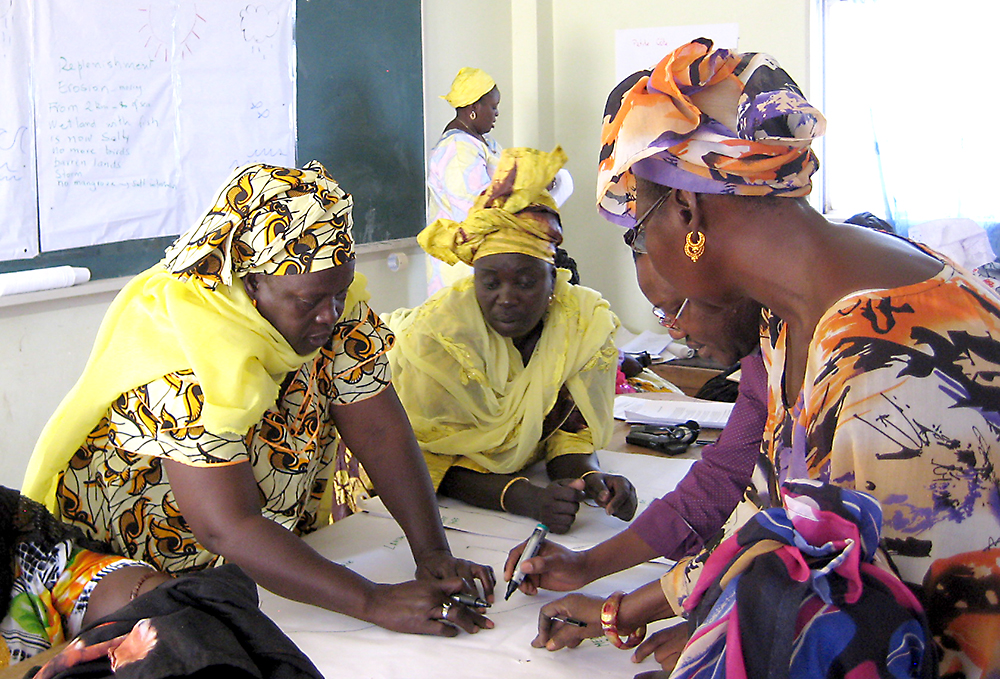
USAID/COMFISH: The Project team worked with the Department of Marine Fisheries and fisheries stakeholders to develop management plans for selected artisanal fish stocks. The key stocks were identified through a consultative and participatory process involving Local Artisanal FIsheries Coucils (CLPAs) at the intervention sites, the central fisheries administration, the decentralized services of the Ministry of Fisheries, associations of fishery professionals, universities, and representatives of other projects and donors involved in the fisheries sector. The choice of Sardinella and Ethmalosa was validated during a national workshop that brought together all the main players in the fishery. Fisheries management planning includes the following:
- Form co-management committees for selected stocks, review existing knowledge and formulate management objectives.
- Develop an effective system for gathering local and scientific knowledge to be included in co-management plans. Most of the stocks in Senegal are believed to be data poor, and the foundation for sound management plans includes an effective data collection system and stock assessment. This will establish clear reference points.
- Identify critical gaps in knowledge and design strategies to work collaboratively to obtain the needed information.
- Conduct participatory mapping exercises for selected fish stocks including habitat, spawning sites, migration patterns, fishing intensity by season, etc.
- Define harvest rules, institutional arrangements for co-management and resources needed to carry out implementation.
- Explore opportunities for eco-certification of fish stocks.
- Develop exit strategies, as necessary, depending on results of stock status reviews and include incentives and other programs for transitioning fishermen to diversified livelihoods.
Five participatory, ecosystem-based management plans for Sardinella were prepared, validated by CLPA fisheries actors and approved by the Minister of Fisheries and Maritime Economy. A draft Ethmalosa management plan was also prepared. These contributed to the implementation of the National Small Pelagic Management Plan.
USAID/COMFISH Plus: The project is providing critical support in the implementation of the Sardinella management plans that were approved under USAID/COMFISH, and is providing similar support to the Ethmalosa management plans once prepared,
validated, and approved. The project will:
- Monitor the implementation of Sardinella collaborative co-management fisheries plans
- Complete the process of preparation, validation, and approval of Ethmalosa collaborative co-management plans in synergy and coordination with other donor initiatives with interventions in Senegal particularly in the Sine Saloum
- Facilitate fisheries monitoring and fisheries science and local knowledge of boats, gear, volume of harvest, and stocks (especially related to establishing protocols that will demonstrate the impact of new management plan implementation on an on-going basis) with local stakeholders, IUPA, CRODT and other fisheries research institutions
- Update geospatial and GIS data on key parameters and issues for change analysis building on the Center for Ecological Monitoring (CSE) work performed during the USAID/COMFISH project
- Support the implementation of the Sardinella value chain study recommendations conducted by USAID/COMFISH
- Monitor the impact of fisheries management and document the bottom-up co-management process for sharing strategies, processes, and lessons within Senegal and for other nations interested in pursuing participatory fisheries co-management


